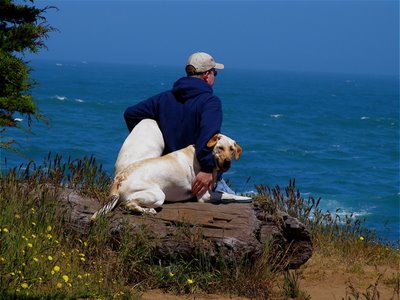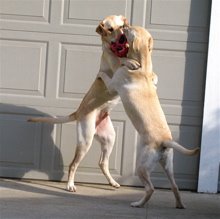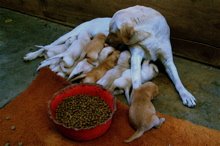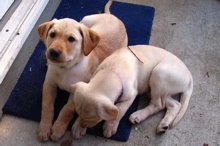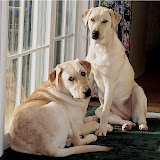This was my personal experience . . .
When I first realized I was headed down the wrong path as the dogs entered adolescence I started to look for another trainer. Someone who understood specifically what we were going through and had real solutions. Our holistic vet recommended a "Bark Busters" trainer. I'm sure the trainer had been doing the rounds and left brochures at the office. The vet asked me to let him know how things went. The first referral he had made had gone well but he wanted to know how things went for us. So I gave the trainer a call.
I had to leave a message as no one answered, but my call was returned that very evening. The trainer was very understanding and took the time to ask what I felt were very relevant questions. He was empathetic and compassionate. Then we discussed the details. He said that he started with at least a 2 hour session where he primarily educates his clients on the psychology of dog behavior and what motivates dogs to do what they do. He than said he does (to my best recollection) ~5 sessions with the dogs. For this he charges $500 per dog, but since we had two dogs he was only going to charge us $800. Oh, but wait, there was a life time guarantee!!
All my relief in finding a trainer that understood went out the window. Was he insane!! I understood that we needed to change our approach, that our dogs needed to practice new behaviours, that we needed to practice better handling skills. How was that going to happen in the limited time he was saying he would actually be working with us? I felt caught between a rock and a hard place, I love my dogs and wanted things to change, this guy had taken the time to talk to me, he was saying he could help. But, huge gulp, how much was it worth to me?
My intuition said keep looking, get over your guilt, buck up and find something that rings true for you. Feeling guilty is not a good place to start any commitment!!.
That's when we found Trish. So far we have spent $600 in classes. But here's the difference, $600 payed for two separate 6 week long classes; 12 - 1 hour classes for both dogs or 24 hours between the two. It also included another 6 week long class just for Shelby; 6 hours. In all, that is 30 hours that have included other dogs, and distractions, not to mention the ongoing support of Trish over the course of the past 5 months. This actually will take us through the end of October. That's 7 months of support and training progression through some of the more challenging developmental stages in raising a dog, especially Labradors.
The price may still seam high in some of your estimation, but it's been more than worth it. Trish rarely has more than 10 dogs in each class, the last two have been more around 7. The activities we do build on the basic obedience we already had but with a fun and games twist, all the while learning important skills. Like I've said before you need to observe a trainer conducting a class before you decide to work with that trainer. It has to be right for you. I didn't know any better when we started in a class of 20. Perhaps for most dogs this is the perfect set up and they will do fine, unfortunately this was not the case for us. Perhaps paying $500 for a week with a "Bark Busters" trainer is more to your liking. Personally it feels like a real sham to me when faced with the reality that shaping a dogs behavior takes time. Their are no quick fixes, no free lunch, and anyone who says that they have the quick Magic Pill should be - BUSTED!!



